You’re living in a fast-paced, ever-changing business world. You can’t afford to stick with old-school planning methods. It’s time you embraced Agile Revenue Leadership.
It’ll boost your flexibility, adaptability, and ultimately, your bottom line. So stop dwelling on outdated strategies; start adapting to the dynamic market trends.
Let’s dive into this revolutionary approach to revenue growth together!
Table of Contents
ToggleUnderstanding the Concept of Agile Revenue Leadership
It’s crucial to grasp the concept of agile revenue leadership in today’s fast-paced business world. You’re not just managing numbers; you’re directing a fluid, unpredictable entity that requires constant attention and adaptation.
Agile leadership training can be your secret weapon here. It equips you with the skills to navigate unexpected hurdles, pivot on the fly, and lead your team through rapid changes. You’ll learn how to make quick yet informed decisions, turning challenges into opportunities for growth.
Revenue prediction models are also an essential tool in your arsenal. These models aren’t crystal balls—they won’t give you exact future figures. But they do provide vital insights into potential revenue paths based on current trends and data.
Remember, it’s not about sticking rigidly to plans or forecasts. It’s about being flexible enough to adapt when those predictions don’t pan out as expected. And who knows? With a bit of creativity and agility, you might even surpass your initial expectations.
In this dynamic business landscape, static strategies won’t cut it anymore—it’s time for agile revenue leadership! So stop planning and start adapting—you’ve got this!
The Shift From Traditional to Agile Leadership
You’re witnessing a significant change in the business world as managers move away from conventional strategies and embrace more flexible approaches. This leadership transition is not just about adopting new methodologies, but also about fostering an agile mindset that thrives on adaptability and responsiveness.
The shift to agile leadership offers compelling advantages. It’s no longer enough to be rigidly tied to annual plans and fixed targets. Instead, you’re now part of a dynamic environment where you need to continuously reassess priorities, adjust strategies, and respond promptly to changing circumstances.
As an agile leader, you’ll find it easier to inspire your team towards shared objectives. Your role isn’t just about managing tasks anymore; it’s about empowering others and promoting collaboration for innovative solutions.
Embracing agility isn’t without its challenges – there’s often resistance during the transition phase. But with perseverance, commitment, and the right mindset, you can overcome these hurdles. Remember: being adaptable doesn’t mean compromising on your goals; instead it equips you better to achieve them amidst uncertainty.
The promises of agile leadership are numerous – greater flexibility, enhanced productivity, improved customer satisfaction… Isn’t it time you experienced these Agile Advantages?
Key Principles of Agile Revenue Leadership
There’s an increasing emphasis on the core tenets of nimble financial management in today’s fast-paced business environment. As part of this shift, Agile Leadership Training is growing more critical than ever. You need to adapt, learn quickly, and preemptively address challenges to stay ahead.
Revenue Forecasting Agility becomes a cornerstone in this new normal. It’s not about rigidly sticking to set plans anymore; it’s about having the flexibility to respond effectively when those plans go awry or circumstances change. Let’s say market trends take an unexpected turn, your revenue forecast shouldn’t be left hanging in uncertainty. Instead, you should have the agility to recalibrate your expectations and strategies.
Agile Revenue Leadership isn’t limited to financial projection adjustments either; it encompasses everything from team empowerment and communication improvement through iterative feedback loops to customer-centric focus that drives innovation. With agile leadership training, you’re equipped with skills essential for fostering a proactive culture that thrives on change – one where everyone collaborates towards sustainable growth.
Remember: Being agile doesn’t mean being aimless; it means being adaptable yet focused on your organizational goals despite any disruption that comes your way.
The Role of Agile Leadership in Revenue Growth
Understandably, you’re wondering how this approach can directly contribute to your company’s financial growth. Agile Leadership Training is not just a trend; it’s an investment in the future of your organization. It equips leaders with the tools and mindset required to navigate today’s rapidly changing business landscape.
But how does it translate into revenue enhancement? Simple, by fostering an environment that encourages innovation, agility, and productivity. When your leaders are adaptable and nimble, they can quickly respond to market changes, seize opportunities as they arise and mitigate risks before they balloon into costly issues.
Agile leadership also optimizes team performance. By promoting open communication, regular feedback and ongoing learning within teams, Agile Leaders boost productivity which inevitably leads to revenue growth.
Moreover, Revenue Enhancement Techniques become more effective under agile leadership. Your teams start thinking outside the box when developing sales strategies or brainstorming marketing initiatives – making these techniques yield better results.
Challenges in Implementing Agile Revenue Leadership
Despite its many benefits, implementing this dynamic approach in your organization may present some challenges. You’ll likely face resistance from those who have grown comfortable with the traditional way of doing things. But don’t let that discourage you; overcoming resistance is a crucial step in the journey towards Agile Revenue Leadership.
Invest time in Agile Training for your team members to help them understand and embrace this new approach. This isn’t just about teaching them a new method – it’s about fostering an adaptable mindset, encouraging innovative thinking and promoting flexibility amidst change.
You might encounter bumps along the road but remember, it’s all part of the process. Find solutions rather than dwelling on problems. Host open discussions where everyone can voice their concerns and collectively brainstorm ways to overcome these hurdles.
In adopting Agile Revenue Leadership, you’re not merely changing how things are done; you’re transforming your organization’s culture into one that is dynamic, responsive and resilient. Yes, there will be challenges but with a solution-oriented mindset and readiness to adapt, not only will you tackle these obstacles head-on but also pave the path for sustainable growth in this ever-evolving business landscape.
Real-World Examples of Agile Revenue Leadership Success
You’ll find numerous businesses that have reaped the benefits of this dynamic approach, showcasing the potential it holds. Agile transformation stories are everywhere, from startups to multinational corporations. They’re proof that agile revenue leadership isn’t just a fad; it’s a strategy for success in today’s fast-paced world.
Take a look at Company X. Once struggling to keep up with market demands, they adopted an agile approach and saw immediate results. By fostering open communication and rapid response to change, they’ve accelerated revenue growth and improved customer satisfaction.
Or consider Company Y. They were stuck in traditional management styles until they embraced agile practices. Now their teams are empowered to make quick decisions, leading to more innovative solutions and revenue acceleration techniques that have significantly increased profits.
These success stories demonstrate how agility is not merely about speed or flexibility—it’s also about resilience, adaptability, and continuous improvement. You too can harness these principles within your organization. Don’t fear change; instead embrace it as an opportunity for growth.
Remember: In the modern age of business where markets shift rapidly, being able to pivot quickly without losing sight of your goals is crucial. So stop planning rigidly – start adapting dynamically!
Future Prospects for Agile Revenue Leadership in Business
Looking forward, it’s clear that this dynamic approach to business management holds promising prospects for the future. Agile Revenue Leadership isn’t just a trend; it’s your ticket to revenue resilience in an unpredictable market.
Imagine this: You’re not merely surviving economic fluctuations, but thriving amidst them. That’s the power of Agile Transformation – it equips you with tools to adapt and innovate continuously. Your organization becomes nimble enough to pivot based on real-time data and customer feedback.
Now, consider the impact on your bottom line. With increased revenue resilience, you’re no longer reacting to changes but anticipating them. You’re creating products or services that customers need even before they realize they do.
Don’t get left behind clinging onto outdated management models. Embrace Agile Transformation today and unlock untapped potentials within your organization tomorrow! It’s time for you to lead the charge towards a more resilient future for your business.
Conclusion
You’ve seen the power of agile revenue leadership. It’s not about rigid plans, it’s about adapting swiftly to market changes.
Sure, there might be bumps along the way, but examples show it works!
So don’t delay—start implementing agile strategies now and watch your business flourish in this dynamic age.
The future is bright for those ready to embrace change and innovate!



